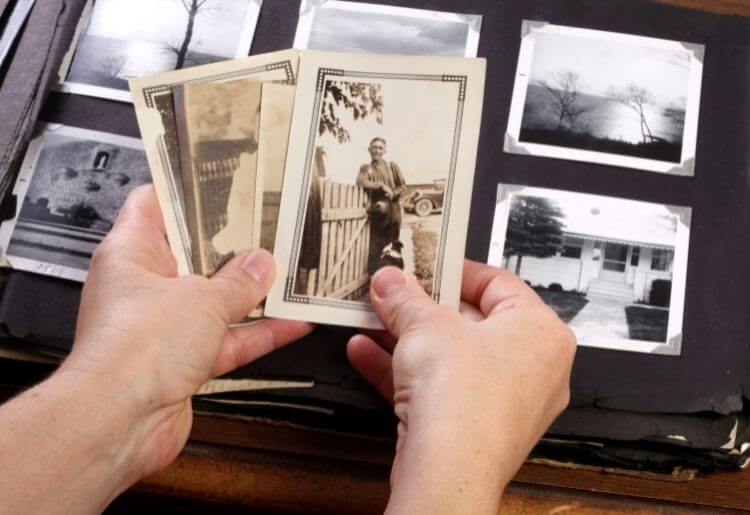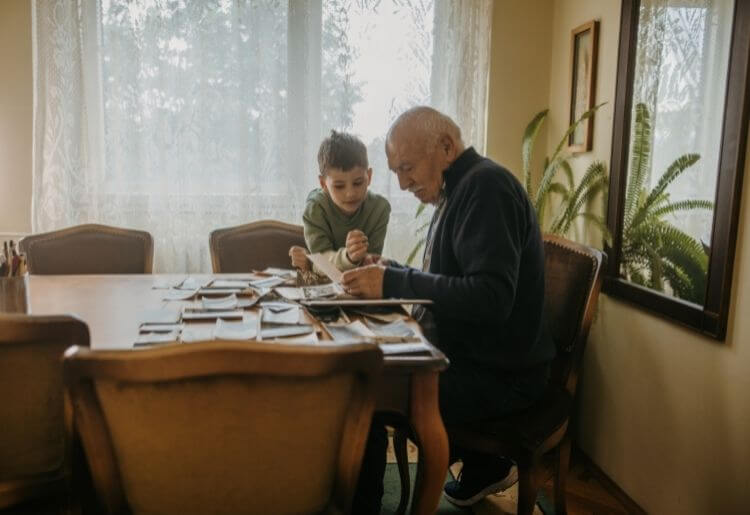This has traditionally been quite difficult, but there are numerous tools available in the modern world to help you research and preserve your family history.
For example, there are dedicated family tree builders, DNA testing companies, and other genealogical research tools available online. People across the world are taking advantage of these to trace their roots, and for a variety of reasons. For example, one researcher even suggests that family tree research could help you come to terms with climate change.
Here, we’ve expanded on our top 10 tips for preserving family history to help you maintain a strong connection to your roots.
1. Perform Genealogical Research
If you don’t know much about your family history, you will need to do some research before you can start preserving it. There are numerous ways to go about this, but we’d suggest starting with online genealogical research tools.
There are numerous platforms that enable you to search for digital records, including birth and death dates and certificates, census records, and newspaper archives. The information found in these can be super useful and can provide significant insights into your family history as far back as a few hundred years ago—and even further in some cases.
To give you an example, a leader in this field is MyHeritage. It provides access to more than 15.7 billion historical records, in 42 different languages, and comes in at a very affordable price. With a premium subscription, you will be able to search these records and access a family tree builder, among other tools.
2. Build a Family Tree
Building your own family tree is an excellent way to preserve your family history for future generations. Doing so will help you piece together your ancestry and where your roots lie.
Your genealogical research should form the basis of your family tree. Many genealogical research tools come with their own family tree builders that enable you to quickly and easily create a visual tree. Some even enable you to share your complete family tree with others for collaboration.
For example, one of our favorite family tree builders, AncestryDNA, is available with an Ancestry.com genealogy subscription. It’s super intuitive and easy to use, and it enables you to view your family tree in a number of different layouts. You can also create individual profiles for different family members, making it a great tool for collating information.
3. Take a DNA Test
Consumer-level DNA testing has become increasingly popular over the last few years, with drivers ranging from health concerns to inheritance issues and parenting disputes. Usually, DNA test kits let you take a small DNA sample using a swab or saliva collection vial and send it in to a lab for testing. Most kits cost under $100 and provide a range of genetic information.
For example, many tests provide information about the ethnicity of your ancestors, which you can use to inform your family history search. You may also receive information about the likely migration paths of both sides of your family. Some platforms even enable you to search for unknown relatives who have taken a similar DNA test.
One of our favorite DNA testing companies is LivingDNA, which offers ancestry testing for as little as $79 per month. It provides results within 6-8 weeks in the form of a digital report, and it places a strong emphasis on security and data privacy.
4. Create a Website With Family Stories and Memories
Even if you’ve thought about the best ways of preserving family stories and memories, you probably haven’t thought about creating a website. However, this is actually an excellent idea, and many of the best website builders even enable you to create a site for free.
Getting started is extremely easy, and you will usually be able to begin with a pre-designed website template. All you will have to do is add your own content, hit the publish button, and continue updating it as you uncover more information.
On top of this, it’s easy enough to build a password-protected website so that your memories are private. Of course, you are free to give the password to others you want to be able to access it. It’s even possible to make certain sections of a website password-protected while making some of your family history information public.

5. Make a Family Recipe Book
If your family has strong culinary roots, the chances are that you have at least a handful of favorite recipes that have been around forever. You might not realize it, but these are probably a major part of your family history and tradition.
By making a family recipe book, you can ensure your family recipes will be preserved for generations to come. Focus on your favorites to begin with, and consider asking older family members if they can remember any dishes with a strong family link.
6. Write a Family History Book
This one certainly won’t be for everyone, but writing a family history book is arguably the best method of preserving family memories. It will require a significant amount of effort, but the results can be extremely rewarding and result in a written record of your family history that can be passed down over the years.
To get started, you will need to spend some time researching your history and gathering information. Don’t forget about photos, as they can add valuable content to your book, and remember to collaborate with other family members as much as possible.
7. Enhance Old Photos
Countless houses across the country have a box or two of old photos or photo negatives tucked away in a dusty corner, slowly degrading with time. If you really care about your family history, it might be time to dig these up and ensure they are appropriately preserved.
Preserving family photos can be quite easy with the right equipment. In most cases, you will be able to scan them and turn them into a digital file to ensure you always have a backup. These can also be enhanced digitally to reveal new information and tell stories about your ancestors.
As for the physical copies, the National Archives website recommends using specially-made preservation files or folders to ensure your photos aren’t damaged when they’re in storage.
8. Speak With Older Relatives
Although it may seem like an obvious step, it’s often worth talking to older relatives about your family history. Sometimes, it’s amazing just how much an elderly aunt or uncle can know about old family secrets.
We’d recommend starting by asking your family members if they’d mind answering a few questions or having a chat about your ancestors. Don’t ignore relatives that you don’t get on with or don’t know very well, as these people could have useful and unique information.
While you’re speaking with relatives, you might like to record your conversations as an audio file for future reference. At the least, we’d suggest jotting down a few notes on your cellphone or with a pen and paper.
9. Preserve Family Heirlooms
Family heirlooms don’t always have a great monetary value, but they are often invaluable in a sentimental sense. Many items are passed down from generation to generation, but they can become worn or damaged over time.
To ensure these remain in good condition for future generations to enjoy, you might need to make some special preservation efforts. These might include placing items in a specially controlled display, in extreme cases. Or, it could be as simple as having heirlooms restored and repaired by a professional.
10. Join a Social Group
Genealogical research is becoming one of the most popular hobbies in the country, and there are countless social groups that you can join. These include specialized genealogical societies, which generally involve physical communities of like-minded individuals.
You might also benefit from joining a few family tree research groups on social media. Facebook, for example, has countless useful groups. These won’t always be helpful for specific information, but they can be useful for discussing general research strategies and methods of preserving family roots and heritage.
At the same time, you could be lucky enough to meet someone who can help you with your research. Local social media groups can be unexpected gold mines, especially if your family has strong geographical roots.
Conclusion
Preserving your family history for future generations can be a fun and rewarding process, but it can also be a painstaking and sometimes frustrating task if you’re starting from scratch. However, with the tools and knowledge, you shouldn’t have any trouble creating a clear record of your roots.
In this article, we’ve outlined our top tips for preserving your family history. Take advantage of existing family knowledge, use online tools, and remember to preserve physical items as well as memories and stories. But above all, enjoy yourself!
